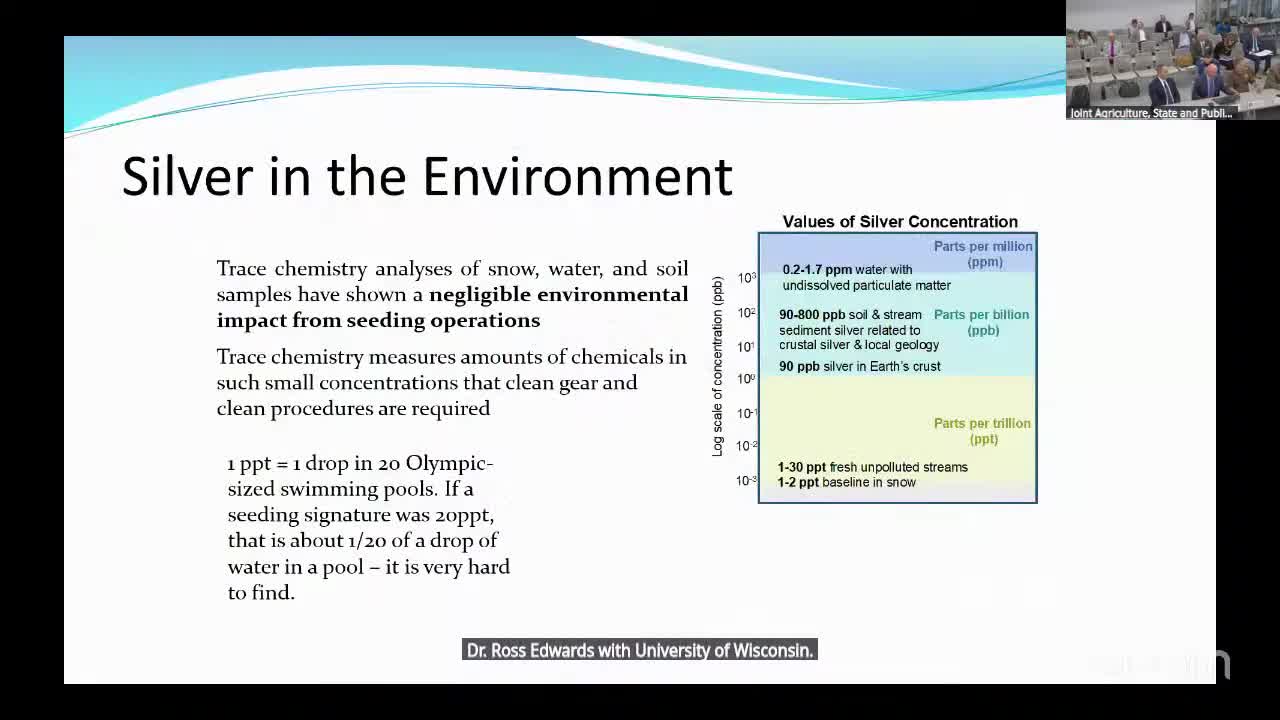
This article was created by AI using a video recording of the meeting. It summarizes the key points discussed, but for full details and context, please refer to the video of the full meeting. Link to Full Meeting
Key Impact: The committee reviewed findings from various studies indicating that cloud seeding operations have negligible environmental impacts, particularly regarding silver levels in snow, water, and soil. Baseline samples taken from snowpack showed silver concentrations ranging from 4 to 6 parts per trillion, while stream baselines varied between 1 and 36 parts per trillion. These levels are significantly lower than natural occurrences of silver in the environment, which can reach up to 1.7 parts per million in undissolved particulate matter. The data suggests that the silver introduced through cloud seeding is minimal compared to naturally occurring silver from geological sources.
Secondary Topics: The meeting also addressed the forms of silver present in the environment and their toxicity. It was noted that silver iodide, commonly used in cloud seeding, is relatively insoluble and poses little risk to aquatic life. The World Health Organization and the Environmental Protection Agency set a water quality standard for silver at 100 parts per billion, while the concentrations from cloud seeding are significantly lower, often around 0.9 parts per billion. Additionally, the committee discussed the bioaccumulation of silver in the food chain, concluding that the stable compounds formed from cloud seeding do not lead to significant toxicity in aquatic organisms.
Conclusion: The findings presented at the meeting reinforce the safety of cloud seeding practices in Wyoming, alleviating concerns about environmental contamination. As the state continues to explore cloud seeding as a method to enhance water resources, these discussions will play a crucial role in shaping future policies and practices, ensuring that environmental integrity remains a priority for Wyoming's agricultural and natural resource management.
Converted from Joint Agriculture, State and Public Lands & Water Resources, August 28, 2025 - PM meeting on August 29, 2025
Link to Full Meeting
Comments
View full meeting
This article is based on a recent meeting—watch the full video and explore the complete transcript for deeper insights into the discussion.
View full meeting